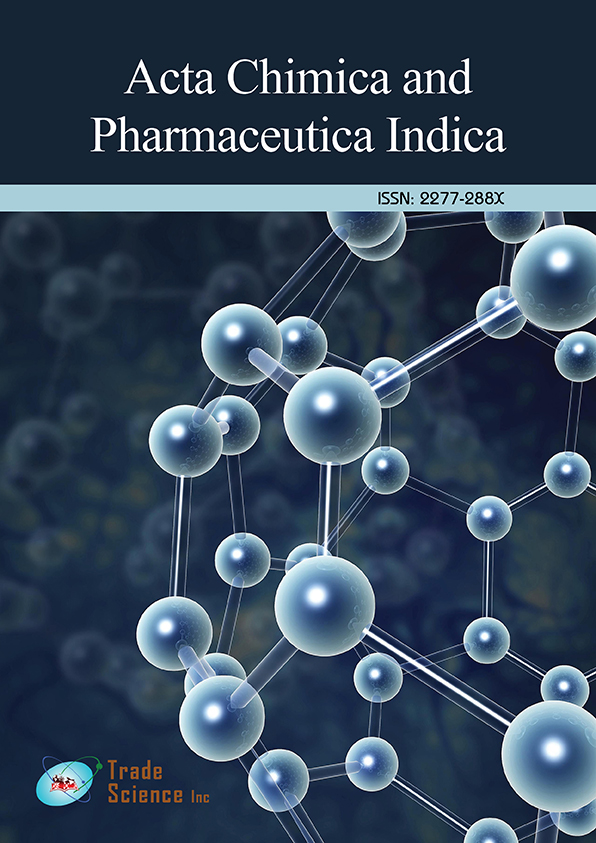Short commentary
, Volume: 12( 2) DOI: -The Process of Converting a Novel Chemical Entity or Existing Pharmaceuticals
-
*Correspondence:
- Ben Jordan Department in Chemistry and Pharmaceutical Science, University of Paris, France, E-mail: warner@123gmail.com
Received: January 31, 2022; Manuscript No: TSACPI-22-61759; Editor Assigned: February 02, 2021; PreQC No: TSACPI -22-61759 (PQ); Reviewed: February 16, 2022; QC No: TSACPI-22-61759; Revised: February 21, 2022; Manuscript No: TSACPI-22-61759 (R); Published: February 28, 2022.
Citation: Jordan B, The Process of Converting a Novel Chemical Entity or Existing Pharmaceuticals Acta Chim. Pharm. Indica. 2022; 12(02):146.
Abstract
Description
Many compounds have pharmacological effects, but many require particular handling to reach therapeutically relevant concentrations at their targets. Pharmaceutics is a branch of medicine that studies how pharmaceuticals are made, delivered, and disposed of in the human body. Pharmaceutics is the science of converting a pure pharmacological material into a usable dosage form. Pharmaceutics has many branches. In continuous production, raw materials and energy are continuously delivered into the system, while output products are extracted at a consistent rate. The steadiness of the material flowrate is critical to the process's success. Because feeding is often the first unit activity in powder-based continuous processes, it is vital to feed powders consistently and properly into succeeding unit activities. The feed rate precision, performance reliability, and minimal disruptions have all been designed into the feeders.
Overall process stability is ensured by accurate and consistent material delivery through well-designed feeders. In pharmaceutical manufacturing, loss-in-weight feeders are preferred. Material dispensing by weight at a precise rate is controlled using loss-in-weight feeders, which are commonly chosen to reduce flowrate variability caused by changes in fill level and material bulk density. Importantly, powder flow qualities have a significant impact on feeding efficiency. In the pharmaceutical industry, a variety of excipients are mixed with the active pharmaceutical component to make the final blend that is utilized to make the solid dosage form. The variety of materials that can be mixed introduces a number of variables that must be handled in order to obtain the desired product quality characteristics. Particle size distribution, particle shape, moisture content, particle surface properties, and powder flow properties are some of the aspects that can be considered.
In pharmaceutical solid oral dose processing, hot melt extrusion is used to deliver medicines that have low solubility and bioavailability. Poorly soluble pharmaceuticals can be molecularly dispersed in a polymer carrier, enhancing dissolution rates and bioavailability. To mix materials together and 'extrude' them via a die, heat, pressure, and agitation are used. High shear twin-screw extruders mix materials while breaking up particles at the same time. The particles can then be mixed together and crushed into tablets or capsules. On a larger scale, the decision of whether to mix organic and aqueous solvents or vice versa becomes crucial. Emulsions can form depending on the solvents employed, and the time required to separate the layers can be increased if this happens.When adding an organic solvent to an aqueous solution, stoichiometry must be taken into account again, as an excess of water could hydrolyze organic molecules even in slightly acidic or basic circumstances.
The location of the chemical plant, in a broader sense, can influence the reaction vessel's ambient temperature. Even a few degrees of change in temperature can result in vastly different extraction levels amongst plants in various countries. While dry ice can be used as a reaction selectivity cooling agent in the lab, the process becomes more complicated on a larger scale. The expense of cooling a standard reactor to this temperature is high, and as the temperature drops, the viscosity of the reagents increases, making mixing harder. This results in higher expenses due to the need to stir more vigorously and replace parts more frequently, or a non-homogeneous reaction. Finally, lower temperatures can cause reagents, intermediates, and byproducts to crust to the reaction vessel over time, reducing product purity.
Acknowledgment
The authors are grateful to the journal editor and the anonymous reviewers for their helpful comments and suggestions.
Declaration for Conflicts of Interests
The authors declared no potential conflicts of interest for the research, authorship, and/or publication of this article.
